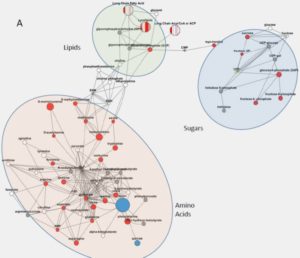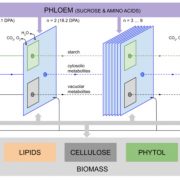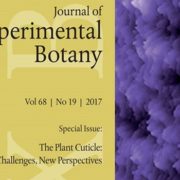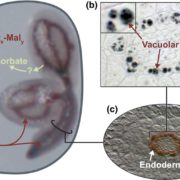Trehalose-6-Phosphate and Reproductive Resource Allocation in Maize
 Flowering is a developmental stage that is particularly sensitive to drought; restriction of water at this time can decrease seed set, final seed number, and harvested seed yield. Kernel abortion during drought at flowering can be alleviated by supplying Suc to reproductive tissue. Consequently, Suc metabolism in reproductive tissue has been proposed as a target to alleviate the effects of drought during the reproductive period. Rather than directly targeting Suc metabolism, it has been proposed that regulating the metabolism and utilization of Suc could be a more feasible target to alter assimilate partitioning. In view of this idea, Oszvald et al. (10.1104/pp.17.01673) studied a transgenic line of maize (Zea mays) that expresses rice TREHALOSE PHOSPHATE PHOSPHATASE1 (TPP1) from the rice MADS6 promoter, which is active over the flowering period. They report that this transgenic line produces higher yields than wild type. This increase in yield occurs with or without drought conditions during flowering. To understand the mechanistic basis of the increased yield, the authors characterized gene expression and metabolite profiles in leaves and developing female reproductive tissues over the flowering period with and without drought. The MADS6 promoter was most active in the vasculature, particularly phloem companion cells in florets and pith, consistent with the largest decreases in trehalose 6-phosphate (T6P) levels (2- to 3-fold) also being found in pith and florets. Low T6P led to decreased gene expression for primary metabolism and increased gene expression for secondary metabolism, particularly lipid-related pathways, resulting in different metabolite profiles in different tissues. Despite similar changes in gene expression, the pith and floret displayed opposite assimilate profiles: sugars, sugar phosphates, amino acids, and lipids increased in florets, but decreased in the pith. SWEET genes, that encode for efflux transporters, were the only class of gene associated with assimilate transfer that were consistently affected in pith and florets. There were also changes in the expression of SnRK1 (a serine threonine kinase that acts as a metabolite sensor) marker genes, endogenous trehalose pathway genes, and the gene encoding the SnRK1 beta subunit. Leaves of transgenic plants also maintained higher rates of photosynthesis for longer during the reproductive period. These results provide evidence that T6P and SnRK1 acts as central regulators of the balance between primary and secondary metabolism, assimilate distribution and source-sink interactions in maize.
Flowering is a developmental stage that is particularly sensitive to drought; restriction of water at this time can decrease seed set, final seed number, and harvested seed yield. Kernel abortion during drought at flowering can be alleviated by supplying Suc to reproductive tissue. Consequently, Suc metabolism in reproductive tissue has been proposed as a target to alleviate the effects of drought during the reproductive period. Rather than directly targeting Suc metabolism, it has been proposed that regulating the metabolism and utilization of Suc could be a more feasible target to alter assimilate partitioning. In view of this idea, Oszvald et al. (10.1104/pp.17.01673) studied a transgenic line of maize (Zea mays) that expresses rice TREHALOSE PHOSPHATE PHOSPHATASE1 (TPP1) from the rice MADS6 promoter, which is active over the flowering period. They report that this transgenic line produces higher yields than wild type. This increase in yield occurs with or without drought conditions during flowering. To understand the mechanistic basis of the increased yield, the authors characterized gene expression and metabolite profiles in leaves and developing female reproductive tissues over the flowering period with and without drought. The MADS6 promoter was most active in the vasculature, particularly phloem companion cells in florets and pith, consistent with the largest decreases in trehalose 6-phosphate (T6P) levels (2- to 3-fold) also being found in pith and florets. Low T6P led to decreased gene expression for primary metabolism and increased gene expression for secondary metabolism, particularly lipid-related pathways, resulting in different metabolite profiles in different tissues. Despite similar changes in gene expression, the pith and floret displayed opposite assimilate profiles: sugars, sugar phosphates, amino acids, and lipids increased in florets, but decreased in the pith. SWEET genes, that encode for efflux transporters, were the only class of gene associated with assimilate transfer that were consistently affected in pith and florets. There were also changes in the expression of SnRK1 (a serine threonine kinase that acts as a metabolite sensor) marker genes, endogenous trehalose pathway genes, and the gene encoding the SnRK1 beta subunit. Leaves of transgenic plants also maintained higher rates of photosynthesis for longer during the reproductive period. These results provide evidence that T6P and SnRK1 acts as central regulators of the balance between primary and secondary metabolism, assimilate distribution and source-sink interactions in maize.









